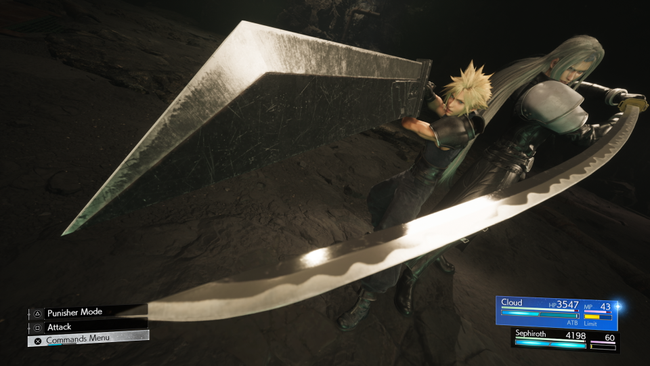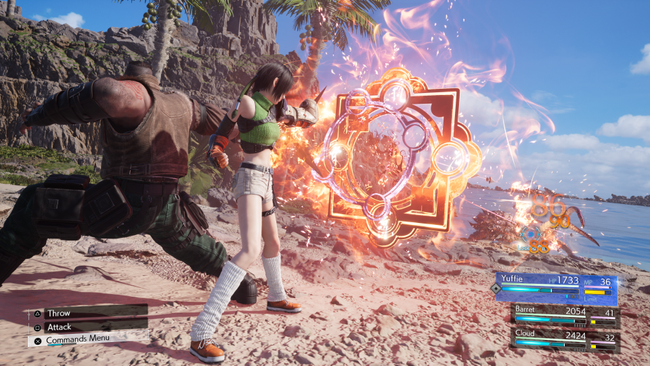
Final Fantasy VII Rebirth expands upon what made Remake great
It doesn't take much thought to realize that Square Enix remaking Final Fantasy VII was always going to be held under a great deal of scrutiny. For many RPG fans, the original is the magnum opus of the genre; any change, however minor, was always going to be met with trepidation at best, and derision at worst. Complicating matters was the company's decision to split the original game's narrative into a series of releases.
There was more to 2020's Final Fantasy VII Remake than first met the eye by practically every metric, including in how bold it was going to be in making changes to the original. That raises the stakes, and in many ways means that the biggest challenge for the remake series was always actually going to be how Square Enix followed up on it with Final Fantasy VII Rebirth and beyond. Thankfully - at least considering what we've played - it looks poised to be on the right track.
Unsurprisingly, much of Rebirth's DNA is lifted wholesale from Remake. This is an iterative sequel, after all. Characters attack and animate very similarly; if you look closely, you can clearly tell which assets have been smartly reused to expedite development. Those who listen carefully will hear things like reused battle barks as characters let rip with abilities, and reused music cues from the first entry in the FF7 Remake series. None of this truly matters, though - because what's most readily apparent when Rebirth is taken as a whole is how Square Enix has managed to make Rebirth feel like less of a sequel to Remake, and more of a natural extension of the concepts that existed in the previous game.
Part of the Final Fantasy conundrum has always been that the series is all about reinvention - which means throwing out everything every time and starting anew. If anything, Rebirth looks to be making a case for what Final Fantasy can achieve with a sequel when it doesn't have to do that. The result is a game that feels more confident, and with greater breadth and depth - the foundation of Remake allowing Rebirth to be a more accomplished experience all-around.

This longer, more open demo culminates in a battle at the foot of the city of Junon, taking full advantage of some of the changes and additions made to the game's battle system. Synergy is the name of the game, here. With basic combo attacks and extravagant skills alike, you can pull off depending on your party composition. Now the parties are less set than in FF7 Remake, you've got choices: so out of Cloud, Barret, Tifa, Aerith, and Red XIII, you can choose three to be in your party and swap that setup around at any time while exploring the zone. The exact composition has a big impact on combat.
Beyond that basic synergy, this concept bleeds into new mechanics, too. Synergy attacks are earned by spending ATB charges with specific characters, and then allows you to use special and powerful team-up combo skills - an escalation of the team-up attacks introduced in Episode Intermission, the PC and PS5-exclusive FF7 Remake story expansion.
That's not to say that the battle system is drastically changed or overhauled, of course - but rather that the changes that have been made feel like a proper extension of Remake's existing systems, building on top of what players are already used to. Similarly, while players can only control up to 3 characters at once, forcing that earlier-mentioned compositional choice, your entire party will be present during battles - engaging with the enemy and all - just as comparatively inactive participants.

The other demo we had the chance to play was a flashback sequence, from the infamous Nibelheim section of the game. The Materia Keeper fighter boss fight from the original appears to have been moved into the flashback instead, and during the investigation of Mt. Nibel players will be able to battle this monster while having direct control of Sephiroth. FF7's antagonist comes complete with a unique moveset filled with parries, unique finishing moves for attack strings, and more.
It's worth noting that this section was a considerably more streamlined experience than that in Junon, and probably represents the other side of FF7 Rebirth. Some areas will be wide open, while others will be thrilling but narrowly-scoped rollercoaster rides. This matches the framework of Remake, where things like Mako Reactor bombing missions and assaults on Shinra were broken up by breezy sidequest-filled lazing around the slums - but if the Junon chapter is anything to go by, the latter concept has been completely overhauled to something much more impressive.
None of what we played was particularly surprising; yet at the same time, it didn't need to be. Remake was always a great framework to build on top of - it was our RPG of the Year for 2020, for god's sake. Rebirth is looking like it builds on that framework in smart and exciting ways. The result is a game that looks bigger and bolder - and it may well be better, too. While I lament we were unable to check out any of the minigames at the Gold Saucer, or some of the other locations in the game, all that means is I can't wait for the next chance we might have to get our hands-on with the game. Final Fantasy VII Rebirth is already shaping up to be one of 2024's best RPGs.